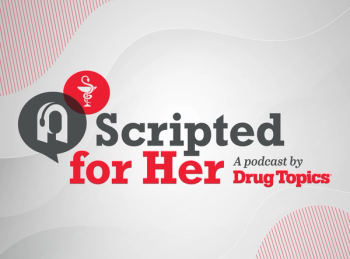
- Drug Topics June 2019
- Volume 163
- Issue 6
Discount Drug Cards Are Flourishing
Programs increasingly cater to the uninsured and underinsured
Discount drug cards appear to be the product du jour in healthcare, from those marketed by pharmacy benefit managers (PBMs) and retailers to those from drug manufacturers and membership organizations, such as
The main motivation behind more cards and agreements to increase patient savings is the revocation of gag clauses that censored what pharmacists could tell their patients.
Some cards have a track record, while others have just entered the market.
Trending:
Last December, CVS Caremark partnered with
Some skeptics question whether these cards really save customers money, but those who offer them are confident about their value, transparency, and ability to improve adherence-an important issue. According to a Kaiser Family Foundation survey, among those currently taking prescription drugs, 24% of all adults and 23% of seniors say it is “difficult” to afford their prescription drugs, including about one in 10 (overall and among seniors) who said it is “very difficult.”
In 2017, the Annals of Internal Medicine estimated that a lack of adherence causes nearly 125,000 deaths and 10% of hospitalizations a year, while potentially costing the healthcare system as much as $289 billion a year. As many as one-third of prescriptions are never filled.
Aiding Adherence
“Our strategy follows a completely different model than traditional discount drug cards by including our consumer platform, which also provides content, education, safety, and messaging to address the most prevalent barriers to adherence and compliance,” says
One of the primary features of the Sharecare Rx card is the Discover section on the Sharecare app that includes helpful search features for members, including medication prices, finding a doctor, and other tools.
With the app, users may opt to get notifications and reminders to refill their prescriptions, as well as information on how to take their medications as directed; drug-specific information on safety and side effects; alerts about interactions; and can track their medications.
Cardholders can create a profile on Sharecare’s stand-alone platform so data reside in one place. “Patients’ medical information typically lives in many different systems so that having a complete list of medications ensures members have easy and convenient access to the information no matter where they are,” Byrne says. Cardholders also may search for a specific medication, filtering results by price, pharmacy location and hours, and availability.
The company is working with its health plan and employer partners to integrate their formulary coverage and pricing into Sharecare, providing seamless access to prescription benefits and information.
Gruverman says users could save up to 80% on generics and take advantage of a wide variety of discounted brands. “This alleviates a major cost burden for people who manage chronic conditions and lack adequate insurance or the resources to purchase these medications,” he says.
The downside is that discount drug card expenses do not count toward a patient’s deductible or out-of-pocket maximums and cannot be combined with insurance; however, some of Gruverman’s peers recommend that consumers submit receipts to their insurers for potential credit.
He sees the development of innovative drug pricing models as more consumers use smartphones and digital tools to manage parts of their everyday lives, and as additional players across the healthcare landscape, such as payers, PBMs, and employers deploy tools to make medications more affordable and accessible.
Headquartered in Gloucester, MA,
Continue reading on page 2...What’s in it for Pharmacies?
The financial path all discount cards take could have fees that end up coming out of consumers’ pockets, Sagall has noted on the NeedyMeds blog.
These fees include negotiated discounted price by PBMs, transaction fees by pharmacies each time a card is used, PBM transaction fees to cover costs of setting up and running a pharmacy network and processing claims, and marketer fees that go toward card promotion and distribution.
Sagall questions why pharmacies would accept a drug card when it could seem to be in their best interest to charge customers a nondiscounted price, but he also notes five reasons why they would:
- They can discount a drug just enough to make some profit.
- They can sell prescriptions they might otherwise not sell if a customer cannot afford a drug at the regular price, even if the pharmacy earns a lower profit.
- They can build customer loyalty by offering drug discounts.
- Peer pressure could prompt a pharmacy to offer a discount card if its competitors do.
Buyers should beware when selecting drug discount cards, he notes. They should make sure the card is free, doesn’t require registration and input of personal information, offers as much of a discount as other cards, and has a helpline.
The Savings
It offers 150 featured program brands at 40,000 retailers, which cover 35 conditions that accrue 40% discounts. The card saves 80% off generics.
The drugs covered primarily target high-cost chronic conditions and, of late, more lifestyle drugs such as erectile dysfunction medications and female products for menopausal symptoms, Achter says.
“We serve those with insurance, those under-insured and uninsured,” she says. “The card is helpful for those under a high-deductible plan and for the insured when their plans don’t provide coverage for a certain medication.
“With more consumer demand for information, the card enables users to see the real price of a drug online and its varying costs at different pharmacies,” she says.
The largest downside is not being able to use a discount drug card in government programs such as Medicare, she says.
Agreeing with Achter, Marsh says, “Cards are a way to shop around as prices continue to grow, eliminate reliance on insurance, or cover drugs no longer on a member’s formulary. Consumers are on the hook for more cost sharing than ever before.”
Read More:
GoodRx covers all FDA-approved drugs, including biologics (even if there is only one manufacturer) and over-the-counter medications, and provides a 15% to 20% discount for brands and 80% for generics. It works with everyone in the pharmacy chain to ensure all of its prices are up to date and accurate.
The company also offers GoodRx Gold, a monthly membership program that provides significant discounts on prescription drug and healthcare services. The cost is $5.99 per month for individuals and $9.99 per month for a family of up to five members and it provides more than 1,000 prescriptions for under $10.
Positive Perception Grows
“Public perception of drug discount cards was low, but the end of the pharmacist gag rule has brought them to the forefront,” says
“There is more awareness by providers and patients about drug price transparency,” he says.
Like many of its competitors, FamilyWize offers a digital card, in which consumers can input pharmacies and receive alerts to use the card.
Majkowski estimates that about 10% to 15% of drugs are purchased via a discount card or coupon.
The FamilyWize card offers 45% discounts off multisource generics, with a lower discount for single-source generics and brands.
FamilyWize has saved 13 million people $1.5 billion since its inception in 2005, enabling users to purchase drugs at 60,000 chain and independent pharmacies.
Majkowski touts the benefits of discount cards by emphasizing that there are no eligibility requirements; users can be uninsured, insured, or underinsured; do not have to be a U.S. citizen; and even can apply discounts to purchases made by relatives.
On the other hand, Majkowski says some of the independent pharmacies do not always share the same enthusiasm about cards as consumers because their customers would pay more of the usual and customary prices without the card.
FamilyWize passes along 100% of discounts to consumers, while other vendors might use rebates or keep some of the discount as part of their spread.
Majkowski sees a trend toward pharmacies relying on discount cards from third parties rather than sponsor their own because they don’t want to risk running afoul of Medicare and Medicaid laws.
Articles in this issue
over 6 years ago
Opinion: Data is a Vital Resource in Fighting the Opioid Crisisover 6 years ago
Why Technology Upkeep is Up to Youover 6 years ago
Five Tech Best Practicesover 6 years ago
New Drug Review: Zulresso (Brexanolone)over 6 years ago
Opinion: The Future of Pharmacyover 6 years ago
How to Keep Your Professional Development Currentover 6 years ago
10 Ways to Boost Customer Loyaltyover 6 years ago
Opinion: PharmD Quality vs Quantityover 6 years ago
On the Road to Provider Statusover 6 years ago
Five Tips for Evaluating Clinical StudiesNewsletter
Pharmacy practice is always changing. Stay ahead of the curve with the Drug Topics newsletter and get the latest drug information, industry trends, and patient care tips.




























































































































